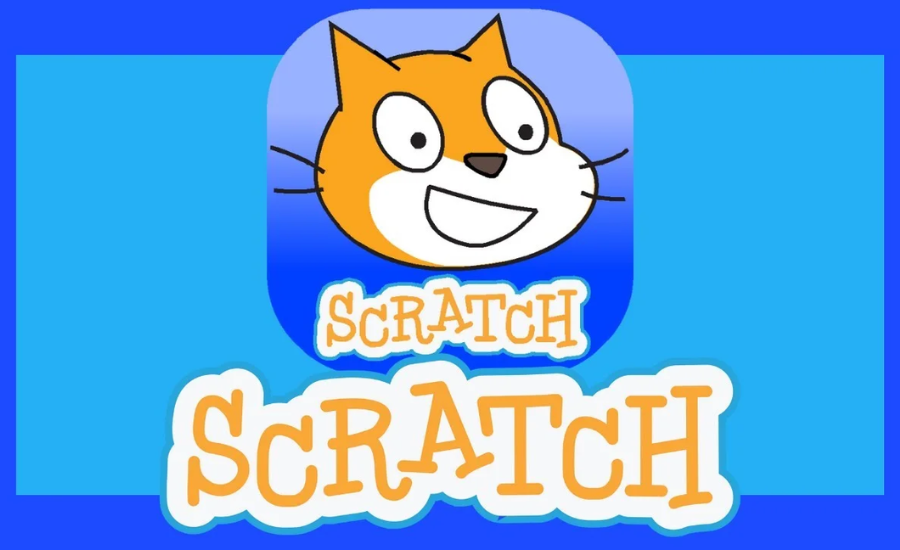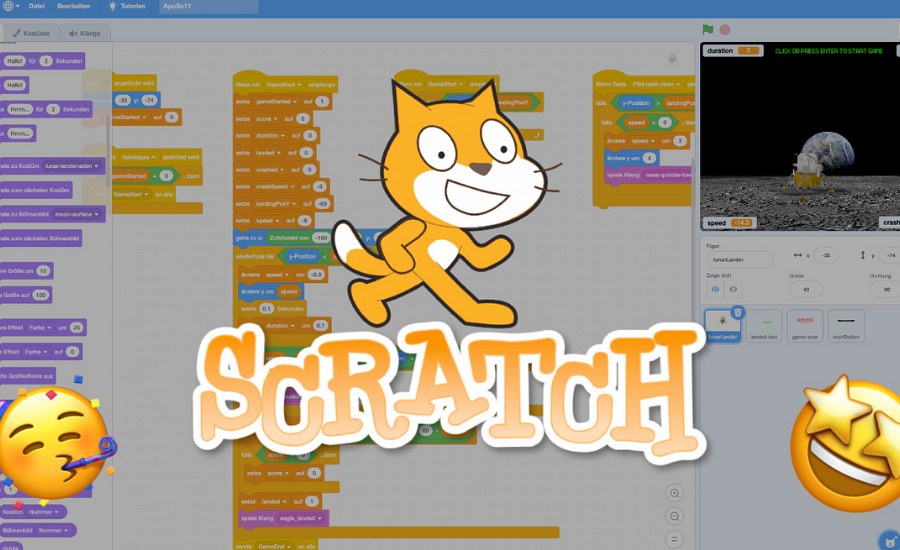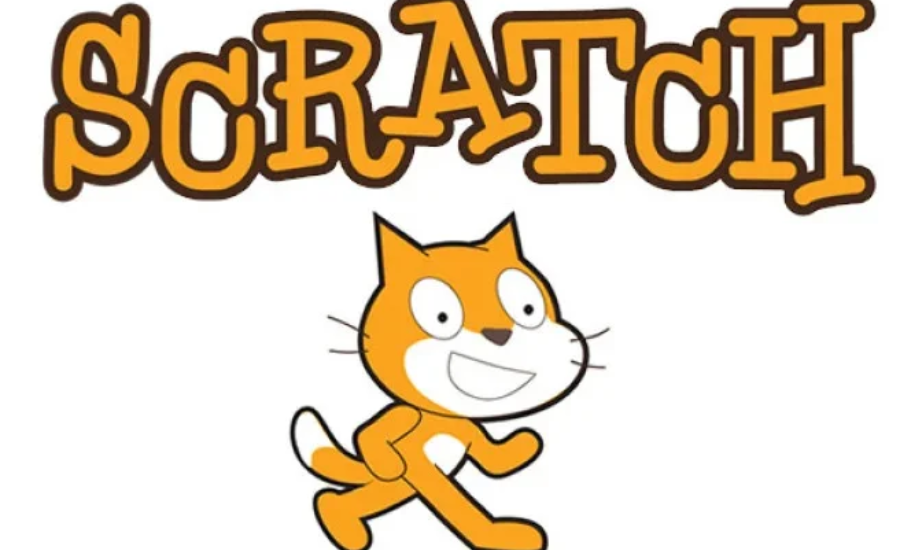game:2uagmwejvg4= scratch: How a Scratch Project is Shaping the Future of Game Development
game:2uagmwejvg4= scratch Game development is a field that is constantly evolving, driven by a never-ending quest for innovation and creativity. Among the many tools available for budding developers, one platform that has gained notable attention for its distinctive approach is Scratch. This platform, particularly exemplified by the project identifier “game:2uagmwejvg4= scratch,” represents a transformative shift in how games are designed and developed.
In this blog post, we will delve into the origins and evolution of Scratch, examine its key features, explore its impact on education, and discuss its future prospects. Through a comprehensive analysis, we aim to highlight why Scratch has become a pivotal tool in both educational technology and game development.
We will start by tracing the inception of Scratch, understanding its foundational principles, and how it has grown over time. Next, we will explore the specific features that set Scratch apart, including its user-friendly interface and educational benefits. Additionally, we will assess the platform’s impact on learning environments and its potential to shape the future of game development.
By the end of this post, you’ll gain a thorough understanding of Scratch’s role in democratizing game development and its significance in fostering creativity and learning. Join us as we uncover the transformative power of this innovative platform.
The Beginnings of Scratch

Scratch originated from a vision to make programming universally accessible, particularly for young learners. It was conceived by the Lifelong Kindergarten group at MIT Media Lab, spearheaded by Mitchel Resnick. The primary objective was to develop a tool that would empower children to channel their creativity through coding, without the need for complex programming languages or intricate syntax. When Scratch was introduced in 2007, it marked a significant breakthrough in educational technology. The platform introduced a visual programming language that allowed users to create interactive stories, games, and animations by simply dragging and dropping code blocks. This user-friendly method simplified the learning process, making it easier for newcomers to understand and apply core programming concepts in their own projects.
Evolution of “game:2uagmwejvg4= scratch”
The creation of “game:2uagmwejvg4= scratch” illustrates a notable advancement within the Scratch platform. This specific project highlights the capabilities of Scratch’s comprehensive toolset. The developers utilized Scratch’s visual programming interface to design a game that balances entertainment with educational value. The development journey of “game:2uagmwejvg4= scratch” involved meticulous testing and refinement, ensuring that the game was both enjoyable and effective as a learning tool. Its success can be attributed to its thoughtful combination of engaging game mechanics and educational elements, offering players a rich and immersive learning experience.
Key Features and Capabilities
A key feature of “game:2uagmwejvg4= scratch” is its intuitive, user-friendly interface, which caters to individuals of all ages and skill levels. The game uses a drag-and-drop coding system, enabling users to arrange code blocks in a logical order to design various game components and interactions. This visual coding method simplifies the programming process, making it more accessible to beginners. Additionally, “game:2uagmwejvg4= scratch” offers an extensive library of sprites, backgrounds, and sound effects that users can integrate into their projects. These resources allow for creative expression without requiring advanced technical expertise. Moreover, the platform supports complex programming concepts such as loops, conditionals, and variables, providing opportunities for users to develop more intricate and advanced projects as they build their skills.
Educational Significance
The educational value of “game:2uagmwejvg4= scratch” is profound and multifaceted. This engaging platform fosters the development of essential skills such as critical thinking, problem-solving, and computational reasoning, which are increasingly vital in our tech-driven world. By offering an interactive learning environment, the game encourages users to explore and implement their ideas, promoting both creativity and self-expression. The hands-on, project-based learning approach not only solidifies theoretical concepts but also enhances the overall educational experience, making it both meaningful and enjoyable. Additionally, the collaborative aspect of Scratch, highlighted by its online community where users can share projects and receive feedback, nurtures a supportive learning environment and encourages peer-to-peer engagement.
Community Engagement and Collaborative Learning
A central feature of Scratch, including projects like “game:2uagmwejvg4= scratch,” is its strong focus on community and collaboration. The Scratch platform provides users with the opportunity to showcase their projects to a global audience, gather valuable feedback, and work together on new ideas. This communal aspect significantly enriches the learning experience, helping users build essential social and communication skills. The ability to remix and modify existing projects fosters a culture of experimentation and iterative learning, allowing users to explore different techniques and see how various approaches yield diverse results. This collaborative atmosphere promotes a spirit of sharing and mutual assistance, which is vital for cultivating an engaged and supportive learning community.
Technical Overview
From a technical standpoint, “game:2uagmwejvg4= scratch” exemplifies the impressive capabilities and flexibility of Scratch as a programming platform. Although Scratch is known for its user-friendly interface, it can also manage intricate game mechanics and interactive features. The development of this game involved crafting detailed scripts to control character actions, process user inputs, and manage various game states. These scripts are created using Scratch’s visual coding blocks, illustrating how advanced programming ideas can be conveyed through an intuitive design. Additionally, the game takes full advantage of Scratch’s multimedia capabilities, incorporating sound effects, animations, and visual elements to deliver an engaging and immersive gaming experience.
Practical Applications

While “game:2uagmwejvg4= scratch” is primarily designed as an educational resource, its benefits reach far beyond the classroom. The problem-solving and logical thinking skills fostered through the game have practical applications in various fields, including engineering, data analysis, and everyday decision-making. Additionally, the creative and design skills developed during the game’s creation process can be highly valuable in professions such as graphic design, multimedia production, and other creative industries. By connecting educational experiences with real-world applications, “game:2uagmwejvg4= scratch” equips users with skills that are crucial for success in a technology-driven world.
The Future Prospects of Scratch
The outlook for Scratch, including projects like “game:2uagmwejvg4= scratch,” is quite optimistic. As technology advances, Scratch is expected to evolve with it. The platform’s development team is consistently working on updates to improve user experience and broaden its capabilities. Future iterations of Scratch may introduce features such as integration with additional programming languages, support for more sophisticated game mechanics, and enhanced tools for collaboration. Furthermore, as educators and institutions increasingly recognize Scratch’s value in teaching, its use is anticipated to expand, providing more learners worldwide with access to its innovative educational benefits.
Integrating Scratch into the Classroom
Integrating “game:2uagmwejvg4= scratch” into classroom settings has demonstrated significant benefits in engaging students and enriching their educational experience. Educators can leverage the game to introduce programming concepts in an engaging and interactive manner. The visual nature of the game simplifies complex ideas, making them more accessible to students, while the hands-on projects keep learners motivated and involved. Additionally, Scratch’s collaborative features enable students to work together on projects, enhancing their teamwork and communication skills. By incorporating “game:2uagmwejvg4= scratch” into the curriculum, teachers can foster a dynamic and interactive learning environment that encourages creativity and innovation.
Success Stories and Achievements
Numerous success stories illustrate the impact of Scratch and “game:2uagmwejvg4= scratch” on students’ educational journeys. Many individuals have pursued careers in technology and programming, thanks to the solid foundation they gained from using Scratch. These success stories underscore the platform’s effectiveness in making coding both accessible and enjoyable for learners of all ages. Educators also report positive experiences with Scratch in the classroom, highlighting how it has fostered essential skills and a passion for learning among students. These accounts demonstrate the transformative potential of “game:2uagmwejvg4= scratch” and its role in shaping the future of education.
Challenges and Solutions in Implementation
Despite its notable success, “game:2uagmwejvg4= scratch” faces several challenges. One key issue is maintaining accessibility and ease of use as the platform evolves. With the addition of new features and functionalities, there’s a risk that the platform could become more complex and less user-friendly for beginners. To overcome this, Scratch developers must focus on user experience, ensuring that new updates remain intuitive and easy to navigate. Additionally, providing continuous support and resources is essential, especially for educators, to help them effectively incorporate Scratch into their teaching methods.
The Role of Educators
Educators are vital to the effectiveness of “game:2uagmwejvg4= scratch” as an educational resource. Their role extends beyond simply introducing students to the platform; they are instrumental in helping learners build a solid foundation in programming and computational thinking. This includes not only teaching the basics of Scratch but also guiding students through more advanced projects and concepts as they advance. Educators also create a nurturing and collaborative learning environment, encouraging students to experiment, take risks, and learn from their experiences. By fostering such an environment, educators help students develop confidence and resilience, which are crucial for success across various fields.
The Role of Parental Involvement
Parents play a crucial role in supporting their children’s engagement with “game:2uagmwejvg4= scratch.” By actively encouraging their children to explore Scratch and participate in its projects, parents can help ignite a passion for coding and technology. They can further support their children by providing access to additional resources and opportunities, such as coding classes, coding clubs, or showing interest in their Scratch creations and offering constructive feedback. Parental involvement not only enriches the learning experience but also helps cultivate a long-term enthusiasm for technology and innovation in their children.
Expanding Beyond Scratch
While Scratch serves as an excellent introduction to programming, its benefits extend well beyond teaching coding basics. The platform fosters creativity, critical thinking, and problem-solving skills, which are essential across various fields and professions. Engaging with Scratch not only equips users with coding knowledge but also deepens their understanding of computational concepts and logical reasoning. This strong foundation can lead to further exploration into more advanced programming languages and technologies, paving the way for continued growth and learning in the tech world.
Promoting Diversity and Inclusion

A notable strength of Scratch, including “game:2uagmwejvg4= scratch,” is its dedication to fostering diversity and inclusion. The platform is crafted to be accessible to users from various backgrounds and skill levels. By employing a visual programming language, Scratch effectively eliminates language barriers and supports different learning styles, making it an inclusive tool for learners of all ages and abilities. Additionally, Scratch encourages creativity and self-expression, allowing users to develop projects that represent their individual perspectives and experiences. This approach enriches the platform with a diverse community of creators, reflecting a broad range of viewpoints and backgrounds.
Final Words
“Game:2uagmwejvg4= scratch” exemplifies the transformative impact of the Scratch platform on game development and education. By leveraging Scratch’s intuitive visual programming language, this project demonstrates how users can create engaging and educational games while learning essential coding skills. Scratch’s user-friendly interface and comprehensive toolset make it accessible to learners of all ages and backgrounds, fostering creativity, problem-solving, and computational thinking. As educators and students embrace Scratch, the platform not only enhances educational experiences but also prepares users for future challenges in a technology-driven world. The continued evolution of Scratch promises even more opportunities for innovation and learning.
FAQs
1. What is “game:2uagmwejvg4= scratch”?
“Game:2uagmwejvg4= scratch” is a project created using Scratch, a visual programming platform designed to make coding accessible and enjoyable. This specific project demonstrates Scratch’s capabilities in game development, combining engaging game mechanics with educational value.
2. How does “game:2uagmwejvg4= scratch” work?
“Game:2uagmwejvg4= scratch” utilizes Scratch’s drag-and-drop coding system, allowing users to create interactive game components by arranging visual code blocks. This method simplifies the programming process, making it easier for beginners to understand and apply coding concepts.
3. What are the key features of “game:2uagmwejvg4= scratch”?
Key features include an intuitive interface, an extensive library of sprites, backgrounds, and sound effects, and support for complex programming concepts such as loops and conditionals. The project is designed to be both engaging and educational, fostering creativity and problem-solving skills.
4. How can educators use “game:2uagmwejvg4= scratch” in the classroom?
Educators can integrate “game:2uagmwejvg4= scratch” into their curriculum to introduce programming concepts in an interactive way. The project’s visual coding interface helps simplify complex ideas, while its collaborative features encourage teamwork and communication among students.
5. What are the educational benefits of “game:2uagmwejvg4= scratch”?
The educational benefits include the development of critical thinking, problem-solving, and computational reasoning skills. The hands-on, project-based approach enhances learning by allowing students to experiment, implement ideas, and receive feedback.
6. How can parents support their children using “game:2uagmwejvg4= scratch”?
Parents can support their children by encouraging exploration of Scratch, providing access to additional learning resources, and showing interest in their projects. Offering constructive feedback and participating in coding activities together can further enhance the learning experience.
7. What are the future prospects for Scratch and projects like “game:2uagmwejvg4= scratch”?
The future for Scratch and similar projects is promising. As technology evolves, Scratch is expected to incorporate new features, support more advanced programming techniques, and continue expanding its use in educational settings globally.
8. Where can I find more information about “game:2uagmwejvg4= scratch”?
More information can be found on the Scratch website, where you can explore various projects, tutorials, and resources related to Scratch. Additionally, community forums and educational blogs often feature insights and updates on Scratch projects like “game:2uagmwejvg4= scratch.”
Stay in the loop for upcoming updates and alerts! Gaze Up
